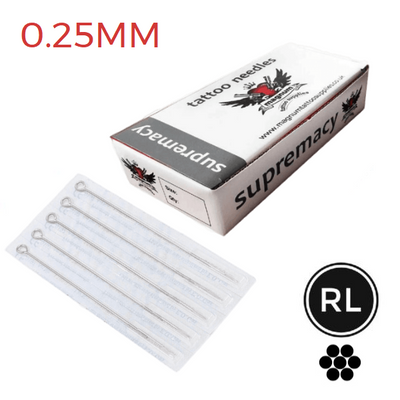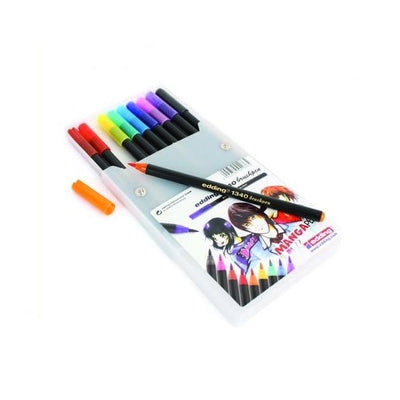When the football world gathered in Paris for the Ballon d'Or 2023 ceremony, it wasn't just about recognising the best players on the planet; it was also a showcase of personal stories etched in ink. Lionel Messi, securing his record eighth Ballon d'Or, and Aitana Bonmati, claiming the women's accolade, took centre stage.
But beyond their skills and trophies, the tattoos they wear unveil chapters of their journeys, beliefs, and the moments that define them. In this article, we'll explore the captivating stories behind these tattoos, revealing how these intricate artworks paint a vivid portrait of the 2023 Ballon d'Or winners' remarkable careers and lives.

Which player has won the most Ballons d’Or?
Lionel Messi, the Argentine maestro, stands atop the list of football's greatest individuals with the most Ballon d'Or awards. Since its inception in the year 1956, the Ballon d'Or has been the most prestigious individual accolade in football. Messi has claimed this trophy eight times—more than any other player in the sport's history.
His extraordinary talent and consistency have been recognised globally, as he first lifted the golden ball in 2009. Messi's dominance continued as he clinched the award for four consecutive years until 2012, a streak that showcased his exceptional skill and influence in the game. Further wins in 2015, 2019, and 2021 have cemented his legacy as perhaps the greatest player to ever grace the pitch.
His eighth win in 2023 reaffirmed a legacy of consistent excellence and adaptation across more than a decade of professional football at the highest level.
Messi's latest triumph came amidst a career that has seen him enchant millions with his footballing prowess, first with FC Barcelona and later with Paris Saint-Germain. Notably, his international success with Argentina in the Copa America and at the FIFA World Cup has bolstered his claim as the sport's greatest.
Who won the first Ballon d'Or?
The first Ballon d'Or was awarded in 1956 to Stanley Matthews, who was an English footballer playing for Blackpool at the time. This award, created by France Football magazine, was initially conceived to honor the best European footballer of the season. Matthews was renowned for his dribbling skills and longevity in the sport, earning the nickname "The Wizard of the Dribble."
Where to watch Ballon d'Or?
The Ballon d'Or ceremony is usually broadcast on various sports channels and often streamed on websites and platforms with broadcasting rights. You can typically watch the ceremony on:
- TV sports channels: Networks like ESPN, Sky Sports, or Eurosport often have rights to broadcast the ceremony in different regions.
- Online streaming services: The ceremony might be streamed through services like DAZN or FuboTV, depending on regional availability.
- Official websites: France Football or L'Équipe (who organise the Ballon d'Or) have previously streamed the event on their official websites.
- Social media: Sometimes, the event is live-streamed on social medias such as YouTube and Twitter.
- Football club channels: Clubs whose players are nominated often provide coverage or streaming options for their fans.
Ballon d'Or 2023 winners and their tattoos
Ballon d'Or - Lionel Messi tattoos
- The Lotus flower: Symbolises Leo Messi's journey from a humble background to becoming one of the greatest football players, representing the idea of following one's dreams and reaching full potential.
- The crown: Lionel and his wife Antonella have crown tattoos matching on the inside of their right arms, signifying their strong love and the idea that she is his queen and he is her king.
- Antonella's eye: Messi has a large eye tattoo on his right bicep, believed to be a tribute to his wife, Antonella.
- The rose window: Leo's rose window tattoo on his elbow is inspired by the Sagrada Familia church in Barcelona and is central to the design of a new tattoo t-shirt.
- Jesus: A portrait of Jesus Christ on his right arm reflects Messi's deep Christian faith.
- Giant clock tattoo: This represents the value of time and spending it with loved ones, reminding him of life's important priorities.
- Timepiece cogs: Located under the giant clock, these cogs relate to the passage of time.
- The rosary: A string of beads on his sleeve, paying homage to Messi's hometown of Rosario.
- His mother's portrait: Messi's first tattoo is a portrait of his mother, Celia Maria Cuccittini, reflecting his love and admiration for her.
- Birthdates tattoo: Messi has the birthdates of his loved ones, including his wife and children, on his right leg.
- Antonella's lips: The lips tattooed on his left hip belong to his wife, Antonella.
- Football tattoo: A soccer ball on his left calf symbolises his love for football, in addition to his family.
- The number 10: On his left leg, Leo has the number 10, his jersey number for FC Barcelona and the Argentina National team.
- Mateo: The name of Messi's second son is tattooed vertically next to the Jesus portrait.
- South America tattoo: There is mention of a tattoo representing South America and Europe, the continents where he has lived, on his right arm.
- 11 handprints + thiago: Leo got his first son Thiago's handprints tattooed on his left thigh to symbolise fatherhood.
Ballon d'Or Feminin - Aitana Bonmatí tattoos
Aitana Bonmatí, the talented Spanish footballer known for her skilful playmaking, has maintained a relatively private life, and there isn't much public information regarding her having any tattoos.
Players often have personal reasons for getting tattoos, ranging from commemorating significant life events to expressing their personality or beliefs. Should Aitana Bonmatí choose to share any artwork she has on her body, it would likely be covered by sports media or through her personal social media channels.
Kopa Trophy for the best male U-21 player - Jude Bellingham tattoos
Jude Bellingham, the young English footballer who plays as a midfielder for Bundesliga club Borussia Dortmund and the England national team, was not widely recognised for having any prominent tattoos. Unlike many footballers who often use tattoos to express personal stories, beliefs, and milestones, Bellingham had chosen not to adorn his body with ink, or at least had not done so publicly.
While tattoos can tell a rich story about a player's life and beliefs, their absence tells a different story about personal choice and expression. Jude Bellingham, whether by design or not, reminds us that personal branding in sport goes beyond the ink and is fundamentally about the individual and their journey.

Yashin Trophy for the best male goalkeeper - Emiliano Martínez new leg tattoo
Emiliano Martínez's tattoos have become a canvas chronicling his achievements, especially following Argentina's victory in the Qatar World Cup. The Aston Villa goalkeeper, celebrated for his critical saves throughout the tournament, etched the World Cup trophy onto his left leg. This leg became famous for a match-saving stop during the finals.
Geronimo Rulli, Martínez's teammate, divulged that the tattoo is not just a personal memento but also a tribute to a pact among teammates. The numbers '6.8.12.18' included in the tattoo are squad numbers of German Pezzella, Marcos Acuña, Guido Rodríguez, and Rulli himself — a symbol of unity and the shared promise to immortalise their victory on their skin, encapsulating the deep bonds formed during their world championship journey.
Gerd Müller Trophy for the highest-scoring male striker - Erling Haaland tattoo
Erling Haaland, the Norwegian professional footballer known for his scoring prowess, has made a name for himself as a prolific striker for Manchester City and the Norwegian national team. But he doesn't seem to have any tattoos, which is somewhat uncommon in professional football, where many players sport extensive ink. Haaland, on the other hand, appears to keep his style minimalistic and focuses more on his athletic performance.
The Gerd Müller Trophy, if it has been formalised as an award, would be a fitting tribute to Haaland's goal-scoring talents, as Gerd Müller himself was one of football's most lethal strikers. Haaland's dedication to his craft, much like Müller's, is evident in his remarkable goal-scoring records.
Socrates Award to acknowledge humanitarian work - Vinicius Junior tattoos
Vinícius Júnior is a footballer who expresses himself not just on the pitch but also through the art on his skin. Each tattoo carries a piece of his story, beliefs, and aspirations. Here's a summary of his known tattoos and their meanings:
- ‘Jesus’ tattoo: This is a declaration of his faith and a source of inspiration, symbolising guidance and strength drawn from Jesus Christ. The accompanying quote in Portuguese emphasises his fighting spirit.
- Writing tattoo: Featuring his initials and logo, "vjr," this tattoo is a personal branding statement, a reminder of his identity and pride in his name.
- ‘Lion and rose’ tattoo: Symbolising his zodiac sign, Leo, the lion represents bravery and a warrior's spirit, while the rose might signify beauty and balance in his life.
- ‘Eye’ tattoo: Representing vision and belief, the eye symbolises his focus on his goals. The tattoo is a visual representation of his determination to succeed as a professional footballer.
- ‘Boy’ tattoo: This is a homage to his childhood dreams and aspirations. It reflects his journey from a young boy with big dreams to the reality of achieving them.
- ‘Side’ tattoo: While not fully described, it appears to relate to his dreams of footballing success, with the football image reinforcing this theme.
- ‘Words’ tattoo: “Abençoado por Deus 2000” serves as a personal mantra, reminding him that he is blessed, along with a nod to the year he was born.
- ‘Thigh’ tattoo: Since this tattoo has not been publicly explained or showcased, its meaning remains a personal mystery for Vinícius Júnior.
Their tattoos speak of passion, triumph, and the unyielding commitment to their craft, much like the dedication required to maintain such vibrant tattoos. Speaking of maintenance, the art of tattoo care is essential to preserve the stories and the beauty etched onto the skin. For fans and aficionados who draw inspiration from their idols and wish to protect their own ink, the "Tattoo Goo Tattoo Care Kit (3 in 1)" offers the perfect solution.
This comprehensive kit includes a trio of essentials: Tattoo Goo Lotion for keeping the tattooed skin moisturised, Tattoo Goo Soap to gently cleanse and prevent any infection, and Tattoo Goo Balm (21g) to ensure the vibrancy and health of the tattoo's colours and definition.
Conclusion
Ultimately, the Ballon d'Or ceremony is not just a night to honour the exceptional talents of football’s finest. It is also an evening that subtly highlights the rich tapestry of personal stories as told through the tattoos of these celebrated individuals.
Take, for instance, the intricate designs that whisper of Champions League nights and the hard-fought journeys towards World Cup glory. With each award handed out, there's a recognition that behind every deft touch of the ball is a person whose skin tells a story of triumph, adversity, and undying passion for the beautiful game.
As the latest icons of the Premier League or the emerging legends from Inter Miami and Manchester United step into the limelight, their tattoos remind us that their legacies will be etched not only in the annals of sports history but also in the ink on their skin, for a lifetime. The ceremonious evening may culminate with the lifting of a golden ball, yet the stories inked into the skin of these athletes will continue to resonate with fans long after the applause has faded.



























































 Studio supplies
Studio supplies












 Power & batteries
Power & batteries








 Aftercare
Aftercare





















 Apprentice
Apprentice


 Piercing & jewellery
Piercing & jewellery







 PMU supplies
PMU supplies




 New arrivals
New arrivals
 Gift vouchers
Gift vouchers
 Shop all
Shop all
















































